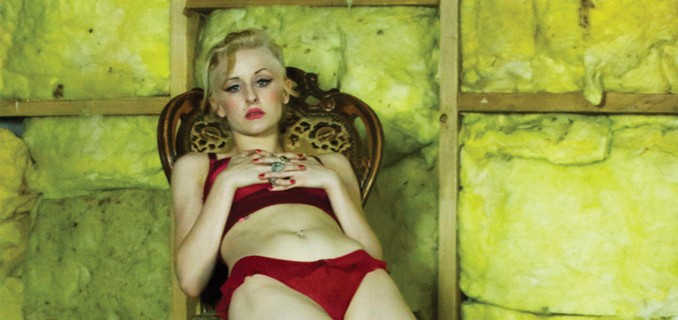
Fashion is synonymous with beauty, glamour and up to the minute style, however that doesn’t exactly tell the full story when it comes to the world of making clothes.
Spinning, weaving, dyeing and printing requires masses of energy, water and chemicals. The textile industry is one of the world’s biggest polluters, second only to oil.
Unfortunately our cheap, chain-store outfits are to blame. This is because the majority of new clothes we buy contain synthetic materials like polyester.
Despite being a lot cheaper to produce, the environmental impact is greatly magnified as these materials take much longer to decompose and are far more expensive to recycle, unlike natural fibres such as wool, silk, linen, cotton and hemp.
Local burlesque performer and artist Zsa Zsa Lafine has been designing and creating her own clothes for the past six years with the help of inner-west op-shops. “I make most of my own clothes from fabrics that are locally sourced or re-purposed from op-shops,” she said.
Now living in Marrickville, Miss Lafine formally studied fashion design in London and is currently attending Sydney College of Arts pursuing fine art.
“I do performance installation art and burlesque drag performances. I’m also in a punk band called Fishguts, as well as perform in a solo project,” she said.
“I make my own clothes because I think fashion has become quite dull as far as what’s available to the mainstream. I don’t like what’s available to people my age and my tax bracket.”
“When it comes to ready-to-wear clothes, they’re ill-fitting and unflattering and it’s built for one body type that isn’t me or my friends. It’s this weird homogenised concept of what human bodies are.”
Retro fashion, especially in the inner west has never been so in vogue. To the point where stores will sell new items disguised as old ones. “To be good at op-shopping, you have to know fashion history because you’re your delving into history and fashion is cyclical,” she said. “Look for fabric! Don’t look for cut! Be open to the concept of alterations. It’s all about silhouettes and the fit but you have to be prepared to spend a lot of time looking.”
“It’s important not to be afraid of theatricality, you don’t need to have a certain personality to pull off a certain garment.”
Over 80 billion new articles of clothing are created each year. Re-using clothes can help reduce this number as well as save money and help support local charity stores.
“In the past if you were an op-shopper you had a look that not many other people did. You had to hunt around for exactly what you wanted and you also had to compromise and be open minded,” She said.
Words: Levi Parsons

